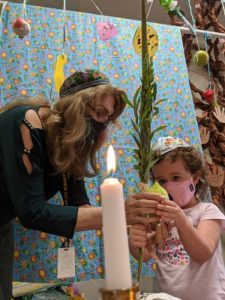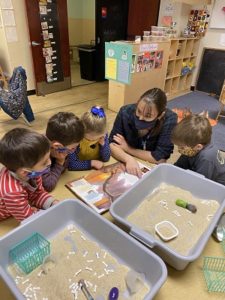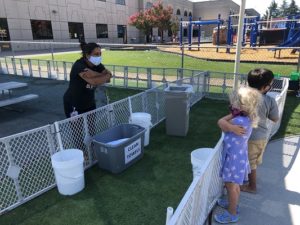By Cyndi Sherman, Senior Director of Preschool, Youth & Family Engagement, March 2021

A year in the life of a preschool aged child is a huge percentage of their time on earth. We don’t know how the isolation and stress of this year will affect the little ones in terms of brain development and social/emotional development. We do know, however, what has helped keep APJCC Preschool children on a positive developmental track.
Children attending the APJCC Preschool have been thriving. They are renewing old friendships and developing new ones. They are bonding to teachers and developing trust in adults outside of their household. These positive results are due to teachers and parents in our program and their ability to adapt to the changing realities of a world in pandemic.
As I reflect on this past year, I think about those first few days in March after we shut down. We all thought it would be a few weeks at worst. Within the week, we were offering families daily contact with teachers through Zoom, email, and YouTube videos. The shift from in-person, close, and intimate relationships to virtual was instantaneous and seamless. This quick turnover kept children and parents in touch with their beloved teachers. Children could tell that they were still cared for by teachers, even if they could not be close.

The next milestone in reflecting on this pandemic year was the reopening of our preschool program in person. This was a true labor of love for our teachers and staff. We met for countless hours, and we pored over county, state, and licensing regulations that seemed to be changing daily. We wrote and rewrote protocols and finally opened in mid-July. We started small, but continue to grow slowly as more parents feel comfortable.
The first day open was emotional and special. Everyone was so happy to see each other. Some things took some time to get used to. Masks, extra cleaning, eating alone, and standing six feet away from colleagues are not natural. What did come naturally were smiling eyes, creative projects, joyful Shabbat celebrations, and developmentally appropriate support and guidance for our community’s children.

We are lucky because we have a community that cares, that is following protocols and helping to keep us all safe, healthy, and open. Our community’s children are lucky because they have a buffer from some of the side effects of prolonged isolation.




